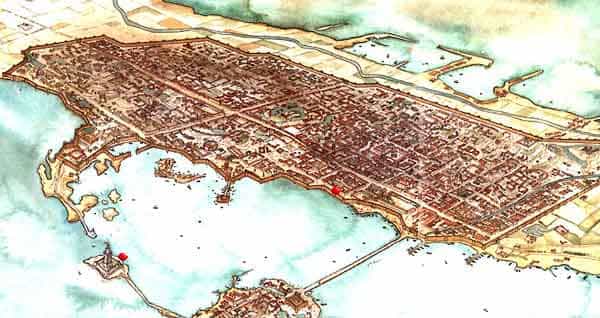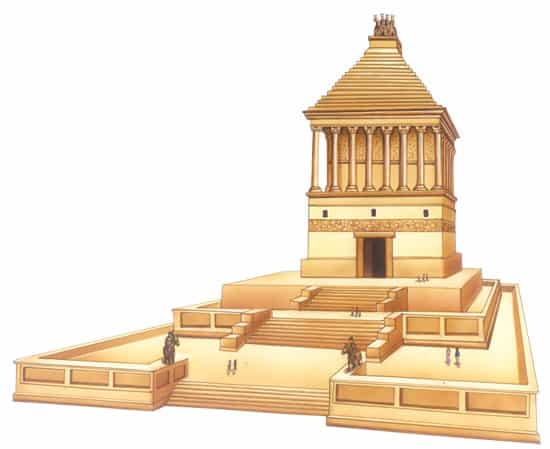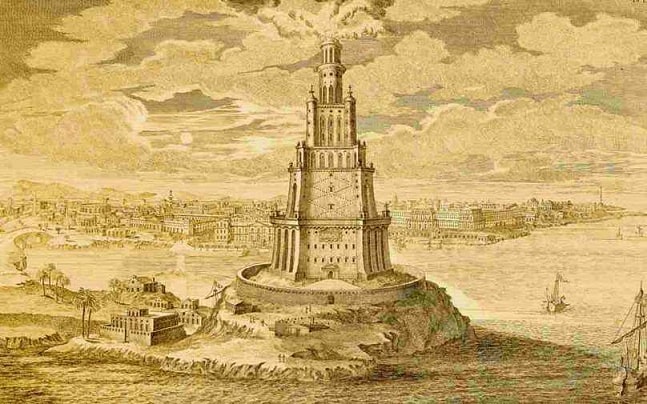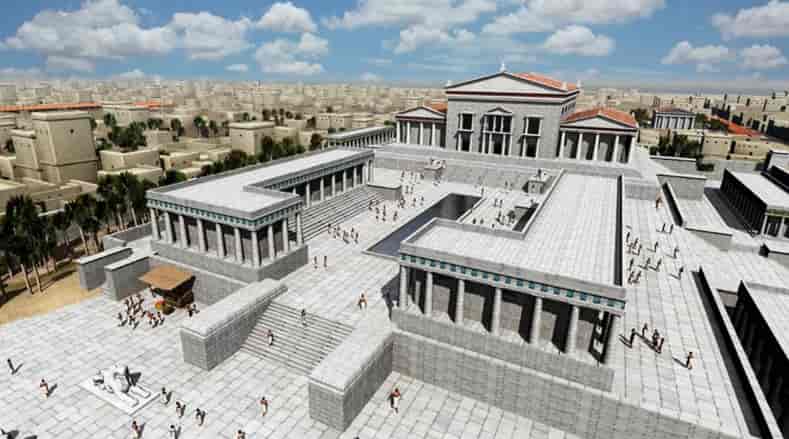The city of Alexandria was founded by Alexander the Great in 331 BC. after having liberated Egypt from the Achaemenid Persian subjugation.
Already in the time of the Ptolemies, the city became the capital of Egypt and was intensively exploited from the beginning of this time as the best showcase of the wealth and splendor of Ptolemaic Egypt.
Therefore, it is not surprising that it soon became, not only the largest city in Egypt, but the most spectacular in the Hellenistic world and one of the capitals of the known world, without a doubt.

Visiting Alexandria
The Soma
Near the most lavish palaces was the Soma, the name given to the burial place of the Ptolemaic kings, and which also contained the body of Alexander the Great, who was originally kept in a completely gold sarcophagus, later replaced by a glass one.
But what was Alexander the Great doing resting like another Ptolemaic king instead of being in Macedonia? Well, what happened is that Ptolemy I, one of his generals and founder of the Dynasty, had kidnapped the corpse when it was being transferred to Macedonia to be buried in the necropolis of Egas.
To put it simply, we could say that the possession of the body of this important conqueror was in itself one of the main propaganda assets enjoyed by the Ptolemy kings.
We do not know specifically what Alexander’s tomb was like or why it has not been found so far, but it is believed that it had to take inspiration and influences from the Mausoleum at Halicarnassus.

The Lighthouse and the Library of Alexandria
Obviously, the most spectacular of all the buildings in the city of Alexandria was the immense lighthouse located at the eastern end of the island of Faros, which was named one of the wonders of the ancient world.
Another highlight of the city was the Museion, an urban space that included the world-famous Library of Alexandria. This institution was founded by Ptolemy I as part of his efforts to make the city of Alexandria the center of Greek culture.
The Museion was modeled after the schools of thought of Plato and Aristotle in Athens and, like them, was a center for research and teaching knowledge.

Obviously, to build one of the largest libraries in the Antiquities many volumes were needed, so both Ptolemy himself and his main agent, Demetrio de Falero, made great efforts to obtain a large number of volumes for the library.
Specifically, it is known that Demetrio de Falero sent searchers to all corners of the Greek world to obtain the necessary texts to fill the Library.
It is estimated that at the end of the Ptolemaic period, the Library of Alexandria had a huge amount of 700,000 volumes, a quantity greater than any other library in the world, and a quantity that until relatively recently was not reached again in any other library of the world.
For this reason, being the world capital of culture and knowledge, this facility was the perfect setting for scholarship and scientific research.
During the Ptolemaic period alone, city of Alexandria was home to such important figures as Eratosthenes of Cyrene (c. 285-194 BC) in science, Herophilus of Chalcedon (c. 330-260 BC) in medicine, Zenodotus of Ephesus (born c. 325 BC). ), Aristarchus of Samothrace (c. 217-145 BC) in literary scholarship, Apollonius of Rhodes and Calimachus of Cyrene (both from the 3rd century BC).

City of Alexandria, home of great festivals
Due to Alexandria’s great success as an economic and cultural center, this city was also chosen as the site of panhellenic events that attracted participants from all over the Greek world, who could thus marvel at the city that had become the Ptolemaic masterpiece.
In this regard, we know that Ptolemy II even created a quadrennial festival called “Ptolemaieia” (probably celebrated around 279/278 BC), with which he wanted to honor his father and, at the same time, the dynasty that had founded.
The organization of the city of Alexandria
The great commercial development of the city of Alexandria was sustained by three main seaports: the deep Great Harbor, formed by Cape Loquia and the island of Faros, which was linked to the mainland by the artificial Heptastadium (which was at the same time a aqueduct), capable of housing the largest ships.
The Eunosto port, to the west; and the port of Lake Mareotis, which received the cargoes from the mainland with which exports were fed.
On the other hand, the streets of the city were designed with an orthogonal layout, with the main street (thirty meters wide) oriented east to west from the Canobic gate to the Moon gate.
The main neighborhoods of the city were (from west to east): the Necropolis (famous for its gardens), Rhakotis (the Egyptian area), the Royal Quarter and the Jewish Quarter.
Source:
historiae web
National Geographic







